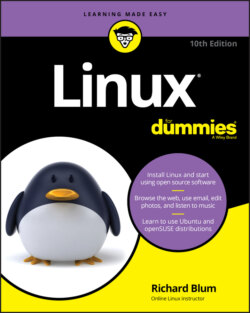Читать книгу Linux For Dummies - Richard Blum - Страница 12
Is Free Really Free?
ОглавлениеUnderstanding Linux requires a radical shift of thought regarding the way that you acquire and use computer software. (Note: By radical, I mean getting to the root of the matter, rather than putting on beads and camping out in the administration building.) Your first step toward shifting your mindset is to alter your general connotation of the word free to represent freedom, rather than free lunch. That’s right; you can sell “free” software for a fee … and you’re encouraged to do so, as long as you relay the same freedom to each recipient of the software.
Don’t scratch your head too hard; these concepts are tough to grasp initially, especially when you consider the conditioning you’ve received from the commercial software industry's marketing departments. Perhaps you don’t know that when you purchase most proprietary software packages, you don’t actually own the software. Rather, you’re granted permission to use the software within the bounds dictated by the licensor.
Linux also has a license. However, the motives and purpose of the license are much different from those of most commercial software. Instead of using a license to restrict use of the software, the GNU General Public License (GPL) that Linux uses ensures that the software will always be open to anyone. No company can ever own Linux or dictate the way in which you use or modify Linux — although they can have their own individual copyrights and trademarks on their various brands of it, such as Red Hat and SUSE. In essence, you already own Linux, and you can use it for anything you like, as long as you propagate the GPL freedoms to any further recipients of the software.
